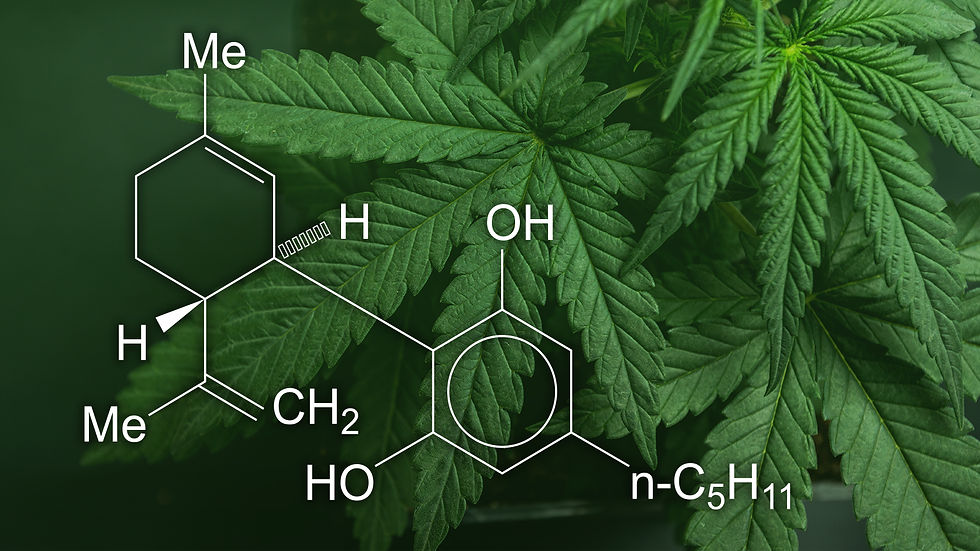🌿 Why Cannabis Was Really Banned: The Hidden History of Power, Profit & Prohibition
- TG

- 2 days ago
- 3 min read
Cannabis has been part of human culture for centuries — used for medicine, relaxation, food, and even fabric. It was a crop, a cure, and a connector. So how did something so useful become one of the most demonized plants in history?
Spoiler: it wasn’t just about health or safety. The real reasons run deeper — into politics, profit, and powerful industries that saw cannabis (and hemp) as a threat.
💰 The Early 1900s: When Hemp Was Too Powerful to Ignore
Before the ban, hemp was everywhere. Farmers grew it for rope, sails, textiles, paper, and even early car panels. It was cheap, renewable, and fast-growing — a dream for sustainable production.
But for certain corporations, hemp was a nightmare. It directly competed with the products they wanted to dominate the market with — like nylon, paper, and cotton.
That’s where DuPont comes in.
🏭 DuPont, Nylon, and the War on Hemp
In the 1930s, the DuPont Company had just developed nylon, a synthetic fiber made from petroleum. Nylon was revolutionary — but it had one big competitor: hemp.
Hemp fiber was stronger, more versatile, and could be grown by anyone, anywhere. It didn’t require factories, oil, or expensive patents. In other words, hemp threatened to undercut DuPont’s entire business model before it even got started.
So what did DuPont do? They got political.
Through powerful allies — like Andrew Mellon, who was not only the U.S. Secretary of the Treasury but also a major DuPont investor — lobbying efforts began to push for stricter regulations on “marijuana.” The trick? Hemp and marijuana were lumped together under the same name, even though hemp can’t get you high.
📰 The Media Machine: How Fear Sold Policy
At the same time, William Randolph Hearst, a newspaper tycoon with massive investments in the timber and paper industries, joined the anti-cannabis campaign.
Why? Because hemp paper was cheaper, stronger, and more sustainable than wood pulp — another major threat to his empire.
Hearst’s newspapers began running sensational stories claiming that “marijuana” caused insanity and violence, pushing racist stereotypes and moral panic. These headlines weren’t based on fact — they were strategic marketing, designed to sway public opinion and protect big business interests.
⚖️ The Marihuana Tax Act of 1937: The Ban Begins
In 1937, the lobbying paid off. The Marihuana Tax Act was passed, effectively criminalizing both hemp and cannabis. Farmers suddenly couldn’t grow one of their most useful crops, and the government launched decades of anti-cannabis propaganda.
DuPont’s nylon took off. Hearst’s paper industry thrived. And hemp — one of the most eco-friendly, versatile plants on Earth — was erased from mainstream agriculture.
It wasn’t about safety. It was about profit and control.
🚫 The War on Drugs: Fear Turned into Policy
By the 1970s, the stigma was cemented. The War on Drugs escalated under President Nixon, targeting cannabis users — especially within marginalized communities — while industries that had once fought hemp continued to benefit from prohibition.
Cannabis became a symbol of rebellion, and laws grew harsher. But the truth never changed: cannabis wasn’t the problem — misinformation was.
🌱 Hemp’s Comeback: The Green Revolution Returns
Fast forward to today, and the truth is finally resurfacing. People are learning that hemp isn’t the enemy — it’s the future. Hemp can make paper, clothing, building materials, biofuel, and even biodegradable plastics, all while growing faster and cleaner than trees or cotton.
It’s no wonder big industries feared it. Hemp doesn’t just compete — it outperforms.
With legalization spreading and education growing, the narrative is shifting again. Cannabis and hemp are being recognized for what they’ve always been: natural, sustainable, and healing.
🚀 The GAS Perspective
At GAS, we’re here to break the stigma and celebrate the plant that never stopped giving. Cannabis has always been about more than just getting high — it’s about connection, creativity, and consciousness.
By understanding the history, we can fuel the future.




Comments